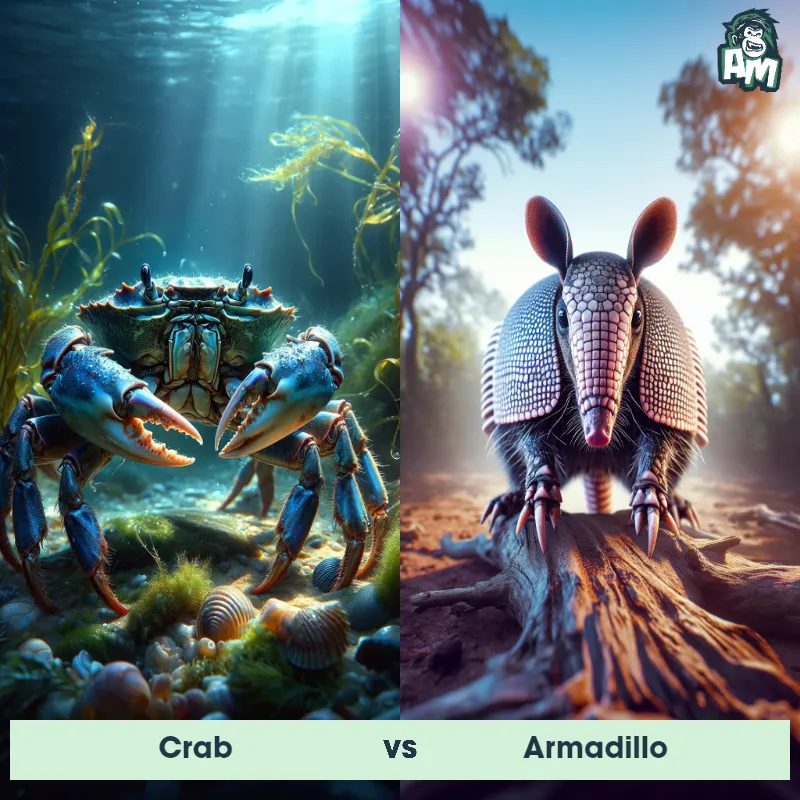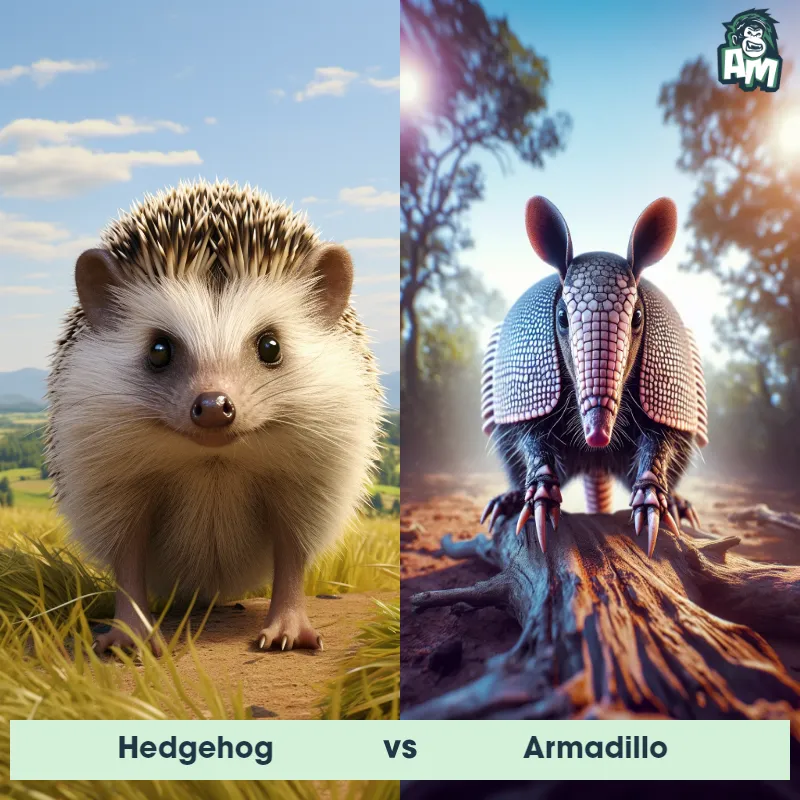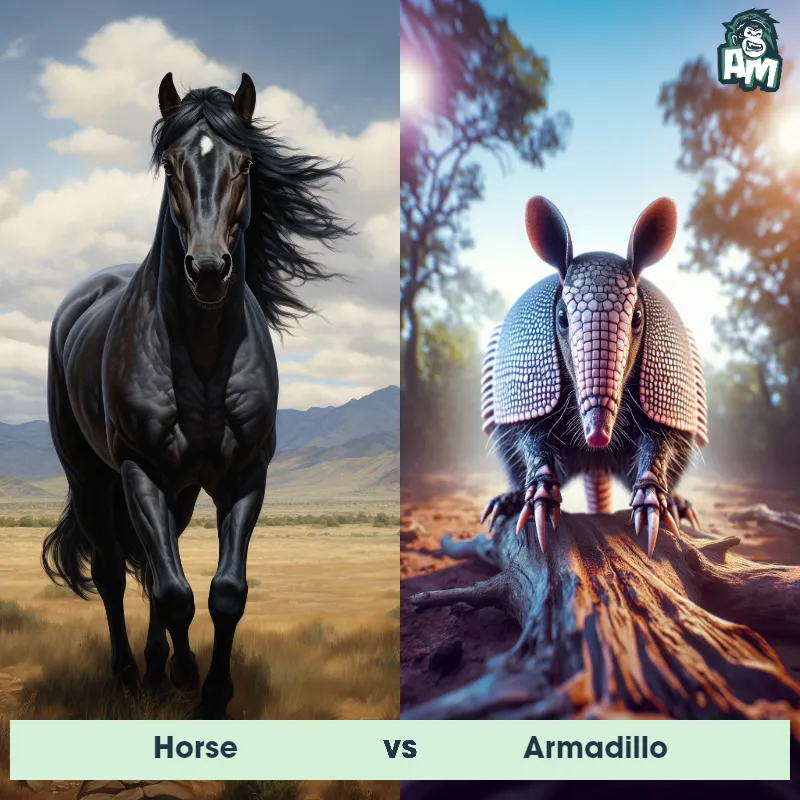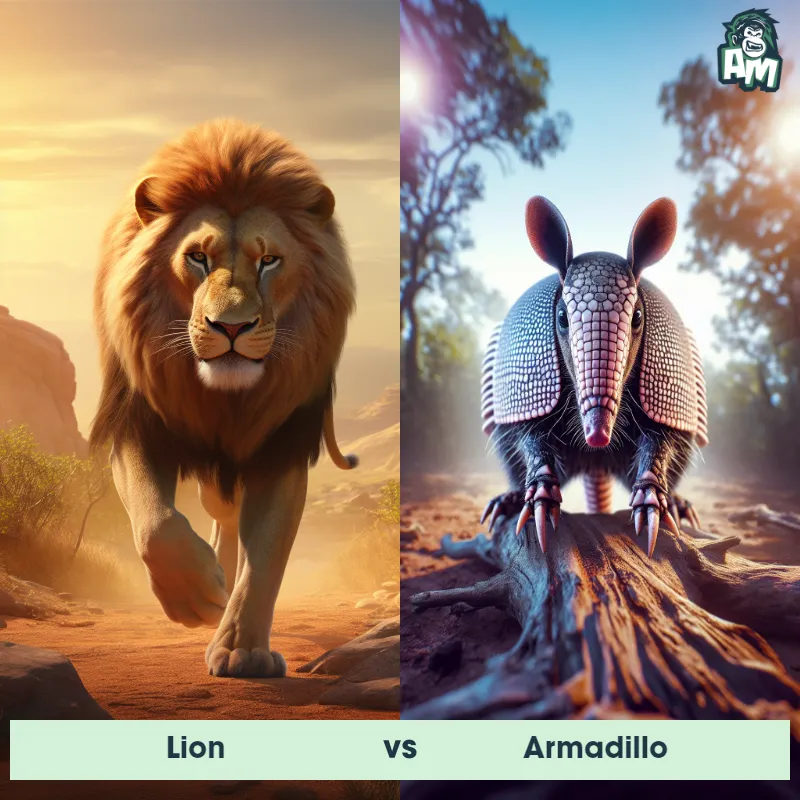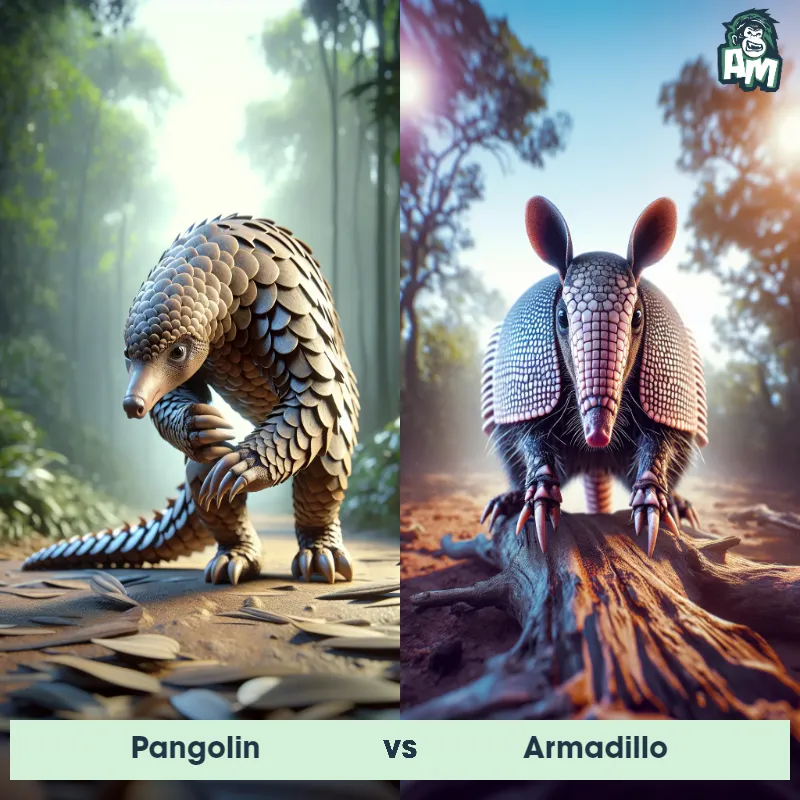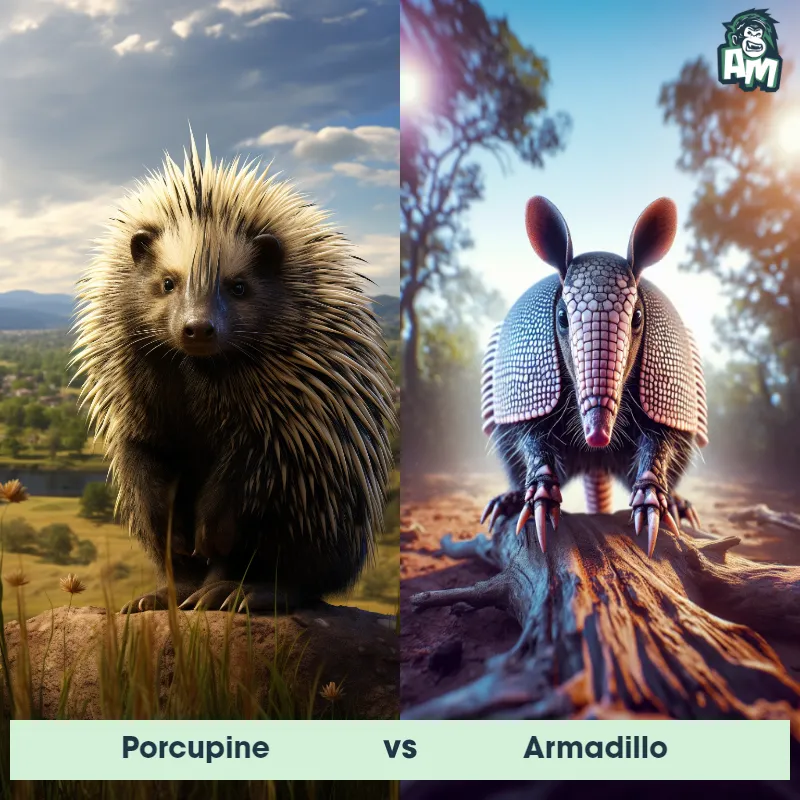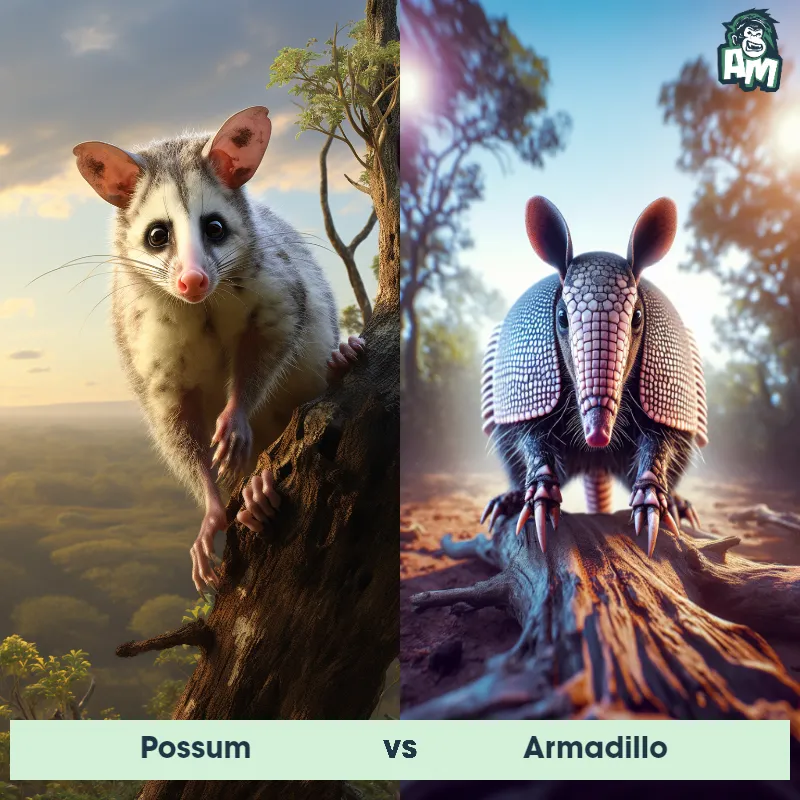The Armadillo
The Armadillo is a unique mammal known for its distinct armor-like shell made of bony plates known as scutes, which cover its head, back, sides, tail, and even the underside of its body. They are small to medium-sized creatures, typically measuring about 15 to 40 inches in length, and they have a weight that ranges from 3 to 120 pounds, depending on the species. Armadillos have long, sharp claws useful for burrowing, digging, and finding food. Their body is covered in tough, leathery skin, and they are usually gray or brown in color, blending in with their habitat.
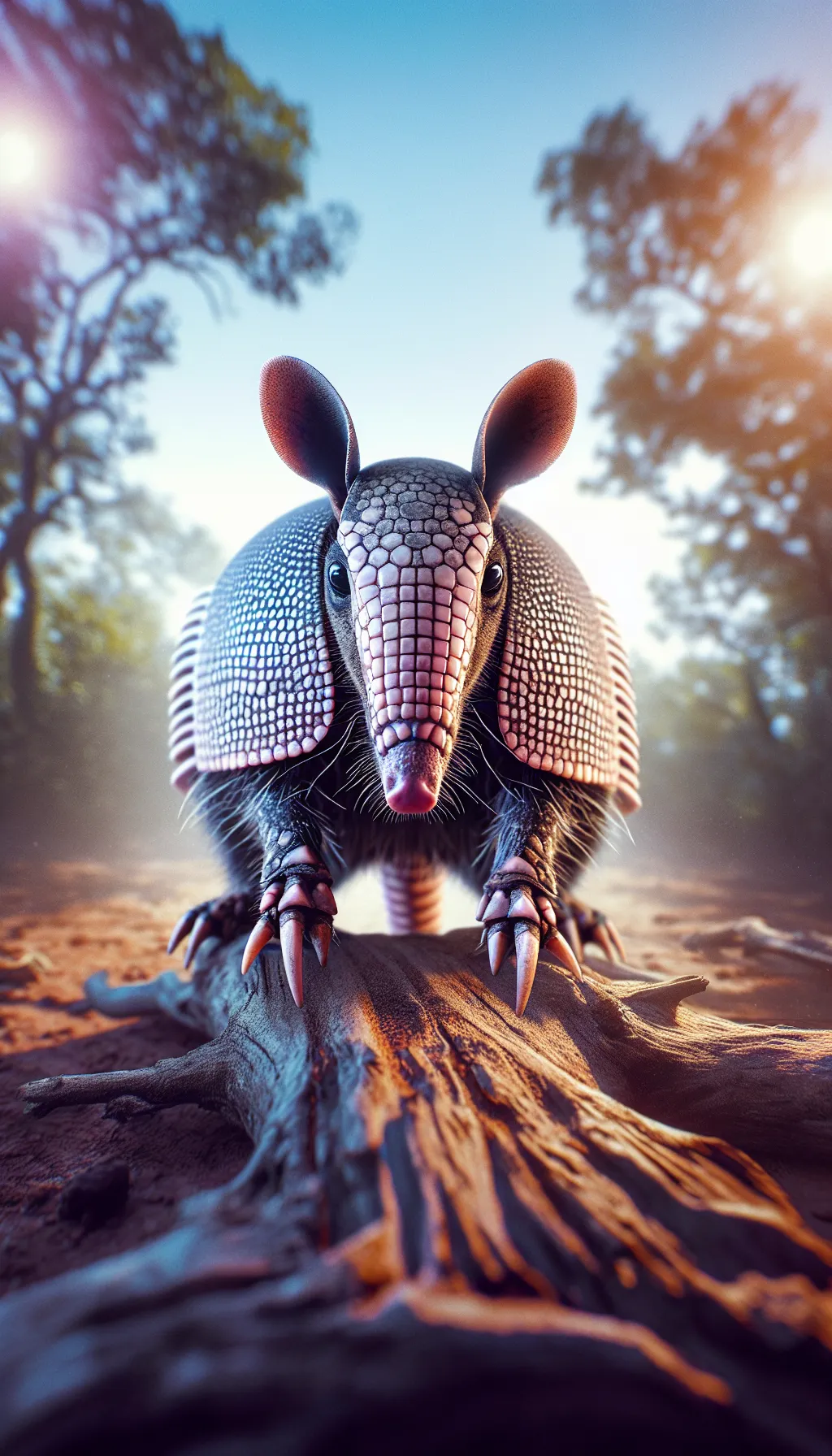
| Armadillo | |
|---|---|
| Size | 5-59 inches (12-150 cm) |
| Weight | 6-119 pounds (3-54 kg) |
| Speed | 30mph (48km/h) |
| Key Strength | Sharp claws for digging and defense |
| Biggest Weakness | Poor eyesight |
| Scientific Name | Dasypus |
| Family | Dasypodidae |
| Habitat | Grasslands, forests, and deserts |
| Geography | Found in the Americas, primarily in South America, Central America, and the southern parts of North America |
| Diet | Insects, small vertebrates, plant material |
| Lifespan | 10 years - 15 years |

The Armadillo
The Armadillo is a unique mammal known for its distinct armor-like shell made of bony plates known as scutes, which cover its head, back, sides, tail, and even the underside of its body. They are small to medium-sized creatures, typically measuring about 15 to 40 inches in length, and they have a weight that ranges from 3 to 120 pounds, depending on the species. Armadillos have long, sharp claws useful for burrowing, digging, and finding food. Their body is covered in tough, leathery skin, and they are usually gray or brown in color, blending in with their habitat.
Fun Fact: Armadillos are excellent swimmers and can hold their breath for up to six minutes, propelling themselves underwater by inflating their stomach to increase buoyancy.
| Armadillo | |
|---|---|
| Size | 5-59 inches (12-150 cm) |
| Weight | 6-119 pounds (3-54 kg) |
| Speed | 30mph (48km/h) |
| Key Strength | Sharp claws for digging and defense |
| Biggest Weakness | Poor eyesight |
| Scientific Name | Dasypus |
| Family | Dasypodidae |
| Habitat | Grasslands, forests, and deserts |
| Geography | Found in the Americas, primarily in South America, Central America, and the southern parts of North America |
| Diet | Insects, small vertebrates, plant material |
| Lifespan | 10 years - 15 years |
Armadillo Matchups
We use AI to simulate matchups between the Armadillo and other animals. Our simulation considers size, strength, and natural predatory behaviors to determine the most likely outcome.
Armadillo: Diet, Predators, Aggression, and Defensive Behaviors
What do Armadillos eat?
Armadillos are opportunistic feeders and have a varied diet. They primarily feed on ants, termites, and other insects. They also eat small invertebrates, plants, fruits, and occasionally carrion. Their strong sense of smell allows them to sniff out food underground and in dense vegetation.
Do Armadillos have any predators?
Armadillos do have predators in the wild, including coyotes, bobcats, mountain lions, and domestic dogs. Birds of prey such as eagles and hawks may also prey on young or smaller armadillos. Due to their armored shell, adult armadillos are protected from many predators, but vulnerable individuals or young armadillos may fall prey to larger predators.
Are Armadillos aggressive?
Armadillos are typically not aggressive towards humans or other animals. They are solitary creatures that prefer to avoid confrontation. When threatened, they will retreat into their burrows or use their claws and armor for defense. However, they may display aggression if cornered or provoked.
Do Armadillos fight?
Armadillos are not known for engaging in aggressive confrontations with each other or other animals. They are more likely to flee or defend themselves using their protective armor and sharp claws. However, territorial disputes or competition for resources may lead to brief skirmishes or displays of aggression between individuals.
How do Armadillos defend themselves?
Armadillos rely on their unique armor-like shell for defense against predators. Their hard, bony plates protect their body from attacks, while their sharp claws are used for digging burrows and defending themselves. When threatened, armadillos can curl into a ball, tucking their head and legs inside their shell to shield vulnerable areas.
What is the biggest weakness of Armadillos in a fight?
Despite their protective armor, the soft underbelly of armadillos is a vulnerable spot in a fight. Predators that can flip an armadillo onto its back may expose this weak point, making them more susceptible to attacks. Armadillos use their armored shell primarily for defense, and if their underside is left exposed, they may struggle to defend themselves effectively.
Fun Fact: Armadillos are the only mammals known to carry leprosy, and their susceptibility to this disease has made them valuable organisms for studying the disease in humans.
Fun Fact: Some species of armadillos, such as the nine-banded armadillo, are capable of producing multiple generations of identical quadruplets from a single fertilized egg, making them unique among mammals.



